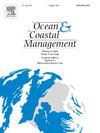在过去的地震调查中确定海洋动物的声音暴露水平,以便为南非水域的有效缓解措施提供信息
IF 5.4
2区 环境科学与生态学
Q1 OCEANOGRAPHY
引用次数: 0
摘要
由于不充分的环境管理计划(emp),人们对地震调查对南非海洋动物的影响表示担忧。这项研究评估了2013年在Algoa湾进行的一次地震调查中,海洋动物预计会经历的声音暴露水平(sel)。Algoa湾是极度濒危的非洲企鹅(Spheniscus demersus)、角海豹(Arctocephalus pusillus)和几种鲸类动物的家园。利用声波传播模型,对整个调查过程中从船上看到的鲸目动物、海豹和企鹅的sel进行了估计。在500米处,单脉冲暴露低于评估物种的临时和永久阈值变化。48%的须鲸经历了累积的SELs >;168 dBre1μPa2s,能够导致距离源800到3000米之间的暂时阈值移动,而17%暴露于>;183 dBre1μPa2s,可能导致距离源800到2400米之间的永久性阈值移动。在调查期间,预计没有齿齿动物暴露于超过临时或永久阈值转移的既定限制的累积声级。在为期六周的调查中,对超过120 dBre1μPa2s敏感的非洲企鹅暴露在152至183 dBre1μPa2s之间,这引起了人们对长期影响的担忧。这些发现突出表明,有必要减轻海洋动物长期暴露于噪音污染的影响。我们建议建立一个独立的监管委员会,由政府官员、行业专家、声学家和海洋科学家组成,负责制定基于科学的缓解措施,规范和监督电磁脉冲的过程和内容,并就保护海洋动物免受噪音污染的政策向政府提供建议。本文章由计算机程序翻译,如有差异,请以英文原文为准。

Determining sound exposure levels for marine fauna during a past seismic survey to inform effective mitigation measures in South African waters
Concerns have been raised about the impact of seismic surveys on marine fauna in South Africa due to inadequate environmental management plans (EMPs). This study assessed sound exposure levels (SELs) expected to be experienced by marine fauna during a 2013 seismic survey in Algoa Bay, home to critically endangered African penguins (Spheniscus demersus), Cape fur seals (Arctocephalus pusillus), and several cetacean species. Using acoustic propagation modelling, SELs were estimated for cetaceans, seals and penguins seen from the vessel throughout the survey. At 500 m, single-pulse exposures were below temporary and permanent threshold shifts in assessed species. 48 % of baleen whales experienced cumulative SELs >168 dBre1μPa2s, capable of causing temporary threshold shifts between 800 and 3000 m from the source, while 17 % were exposed to >183 dBre1μPa2s, potentially leading to permanent threshold shifts between 800 and 2400 m from the source. No odontocetes were predicted to be exposed to cumulative sound levels exceeding the established limits for temporary or permanent threshold shifts during the survey period. African penguins, sensitive to SELs above 120 dBre1μPa2s, were exposed to levels between 152 and 183 dBre1μPa2s over the six-week survey, raising concerns about long-term effects. These findings highlight the need to mitigate against the effects of cumulative exposure of marine fauna to noise pollution. We recommend establishing an independent regulatory board, comprising government officials, industry experts, acousticians, and marine scientists, responsible for developing science-based mitigation measures, regulating, and overseeing the EMP process and content, and advising the government on policies to protect marine fauna from noise pollution.
求助全文
通过发布文献求助,成功后即可免费获取论文全文。
去求助
来源期刊

Ocean & Coastal Management
环境科学-海洋学
CiteScore
8.50
自引率
15.20%
发文量
321
审稿时长
60 days
期刊介绍:
Ocean & Coastal Management is the leading international journal dedicated to the study of all aspects of ocean and coastal management from the global to local levels.
We publish rigorously peer-reviewed manuscripts from all disciplines, and inter-/trans-disciplinary and co-designed research, but all submissions must make clear the relevance to management and/or governance issues relevant to the sustainable development and conservation of oceans and coasts.
Comparative studies (from sub-national to trans-national cases, and other management / policy arenas) are encouraged, as are studies that critically assess current management practices and governance approaches. Submissions involving robust analysis, development of theory, and improvement of management practice are especially welcome.
 求助内容:
求助内容: 应助结果提醒方式:
应助结果提醒方式:


